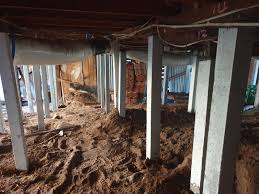Underpinning Improves Transport Infrastructure Stability
Underpinning is essential in civil engineering click this, where the safety and durability of transportation infrastructure are paramount. Typically used to repair building foundations, this technology has improved bridge, tunnel, road, and railway stability. The underpinning is a crucial method for maintaining and improving transport networks because of the problems given by changing environmental conditions, growing load demands, and aged infrastructure.
Transport infrastructure underpinning uses numerous methods and technology to reinforce and stabilize foundations. Carrying more loads is one reason for underpinning transport structures. As cities grow and traffic increases, bridges, and roadways may exceed design specifications. These structures can be upgraded to carry modern loads with underpinning, prolonging their service life and improving safety.
Environmental concerns like soil erosion, subsidence, and water infiltration can threaten transport infrastructure. Uneven settlement, structural deterioration, and catastrophic failure can result from these concerns. Micro-piling and jet grouting reinforce the soil beneath foundations or create new, more secure foundations deep in the ground. This prevents and repairs damage, keeping transit routes open and safe.
Tunnel construction and maintenance are other vital applications of underpinning in transportation infrastructure. Urban growth and efficient transportation often demand digging near old structures. During tunnel construction, underpinning prevents subsidence and damage. Similarly, underpinning procedures strengthen tunnel walls and foundations during repairs and upgrades, increasing their resistance to earthquakes and ground pressure.
Historic transport infrastructure needs underpinning, too. Many antique bridges and viaducts are still in service but were not designed to endure traffic or environmental conditions. These structures’ historical significance and current safety can be safeguarded for future generations via careful and thoughtful underpinning.
Underpinning developments in transport infrastructure depend on careful planning, advanced engineering, and lasting materials. Ground penetrating radar (GPR) is used to assess subsurface issues at the start of the procedure. This is followed by designing a tailored underpinning solution to support the structure, such as a bridge for heavy traffic or a road at risk of sinking.
